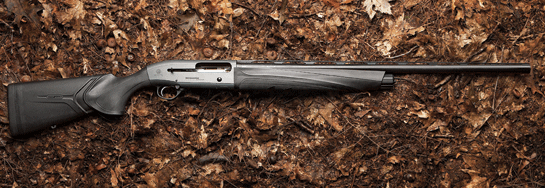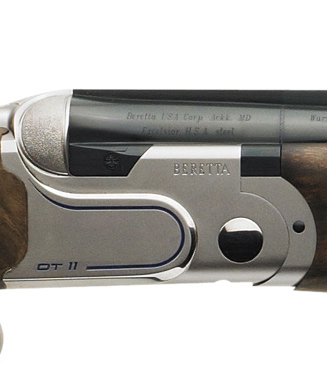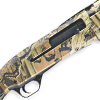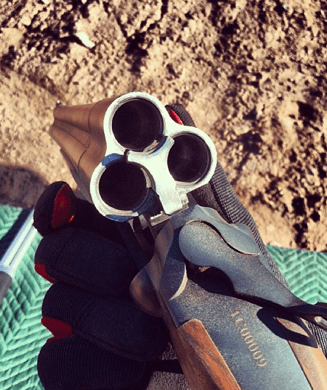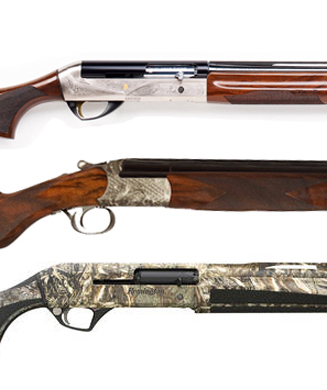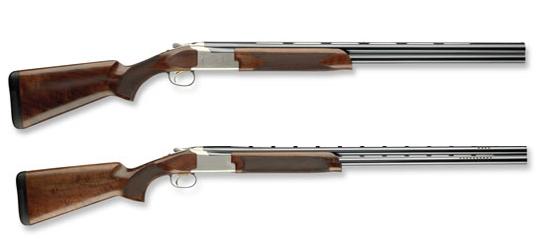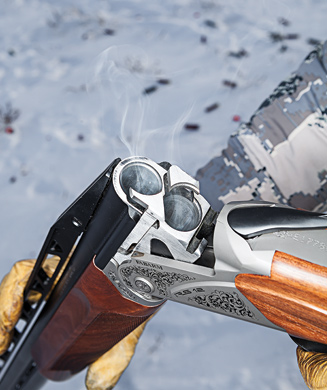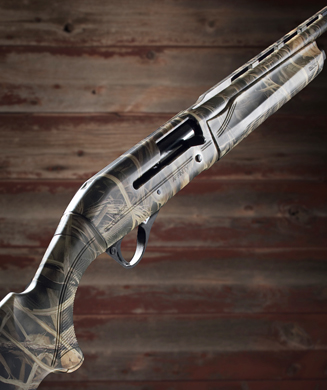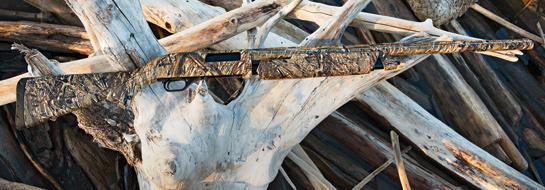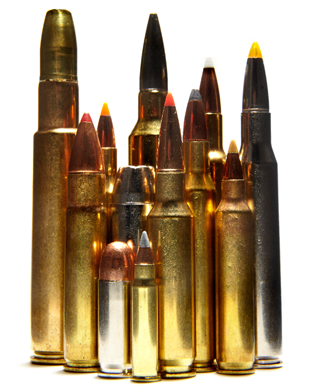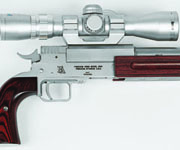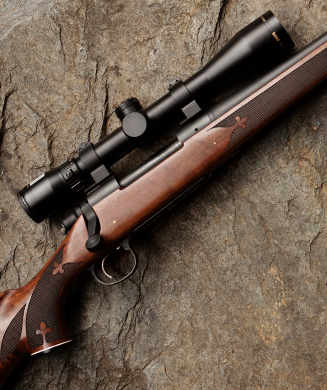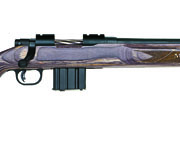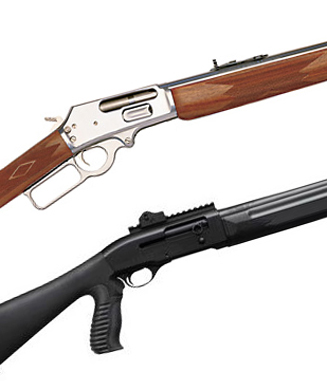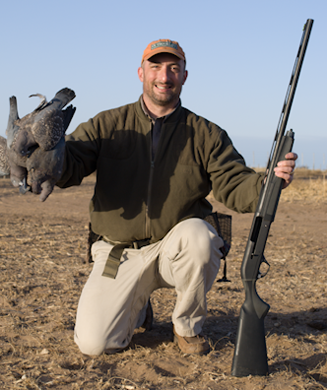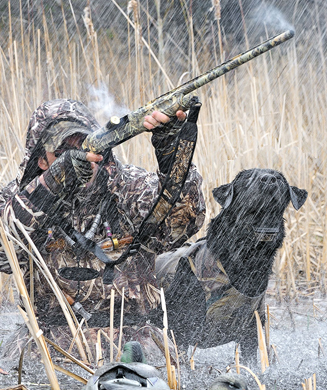We may earn revenue from the products available on this page and participate in affiliate programs. Learn More ›
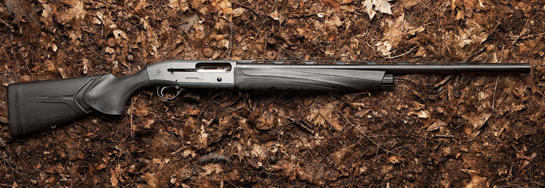
Competitive shooting and upland hunting are the heart and soul of Beretta’s shotgunning efforts—but there’s little doubt the world’s oldest firearms company knows how to make a good semi-auto for the duck marsh. The new A400 Xtreme, which has a 3 ½-inch chamber, has been designed inside and out to hold up to the rigors of hard-core waterfowling.
Waterfowlers love their 3 ½-inch guns. The common perception is that the cigar-size shells are better than the smaller 2 ¾- and 3-inch loads on ducks and geese, that they give the shooter an advantage when it comes to knockdown power and long-range shots, particularly when shooting steel.
The truth is that 3 ½-inch loads do nothing to extend the effective range of a shotgun—the ballistics are unforgiving on this point—but they can deliver a heavier payload of pellets, which in theory improves killing power.
The reason I qualify that statement is that in order to kill a bird with any shotgun, you need to hit it squarely. Since the heaviest magnum shotshells kick like a proverbial mule, shooting technique often suffers, increasing the likelihood of marginal hits or outright misses. I learned this firsthand when I started flailing away with my Benelli Super Black Eagle, which I purchased right after it was introduced, and realized that I did no better with it than I had with my old 3-inch 870.
Taming the Beast
Be that as it may, 3 ½-inch guns are here to stay and gunmakers continue to introduce new models, as Beretta has done with the A400 Xtreme. The discomfort caused by magnum duck loads has prompted manufacturers to come up with various methods to reduce felt recoil. This can be accomplished by using recoil-absorbing pistons or softer butt pads, or by incorporating some type of flex and give in the stock. Whatever the solution, the goal is the same: to spread out the force of the recoil over a longer period of time—though this all still happens in the blink of an eye—reducing the sharpness of the blow the gun inflicts on the shooter’s face and shoulder. (The other option is to port your barrel, though your pals in your duck blind will hate you for it.)
The new A400 uses Beretta’s “kick-off” technology, which relies on spring-loaded shock absorbers to mitigate recoil. Two of these shock absorbers are located within the stock, allowing it to compress about ³⁄₈ inch during recoil, and one is located just behind the receiver and is compressed by the rearward travel of the bolt assembly. This system works extremely well, soaking up some of the pounding that would normally be transferred to the shooter.
Versatile Autoloader
But here’s the other reality about these big booming shotguns: even though they are designed for 3 ½-inch shells, the bulk of what they digest are lighter shells, the majority of these being 2 ¾-inch 1-ounce target loads. The gas system on the A400 had no problems at all operating with these light shells at the skeet range, cycling and ejecting hundreds of rounds without a single hang-up.
The quality of the workmanship on the internal components in the A400 is a big reason it ran so reliably. The chromed rotating bolt head in the action moved slickly in and out of battery, and the precise fit of the pieces that make up the gas system showed no evidence of binding or friction even when dirty.
The barrel exhibited the same level of craftsmanship. The polish on the inside was ripple-free and bright enough to clearly show the contours of the chamber and forcing cone.
Beretta developed an innovative mechanism for breaking down the gun. It takes less than a quarter turn on the forend cap to release the forend and remove the barrel from the action. It’s quick, easy, and simple.
Smooth Operator
In hand, the A400 Xtreme has a lively feel. It weighs 7 pounds 11 ounces, which is fairly standard for a 3 ½-inch semi-auto, but it shoulders and swings like a lighter gun. The trigger on my sample was above average for shotguns of this type and broke at a consistent 5 ¼ pounds.
The combination of the slick gas system, good trigger, and excellent ergonomics makes the A400 fast on the draw. It not only gets on target quickly, but you can run a fully loaded magazine dry before your first empty hits the ground.
The crossbolt safety, for example, is positioned at the front of the trigger guard, right where the index finger of a right-handed shooter should be resting, so getting the gun off safe happens nearly instantaneously.
The rest of the gun’s controls operate as smoothly. The bolt release tab is generously sized and easy to manipulate, and the loading gate on the underside of the action showed no inclination to grab fingers or gloves when reloading, as is often the case.
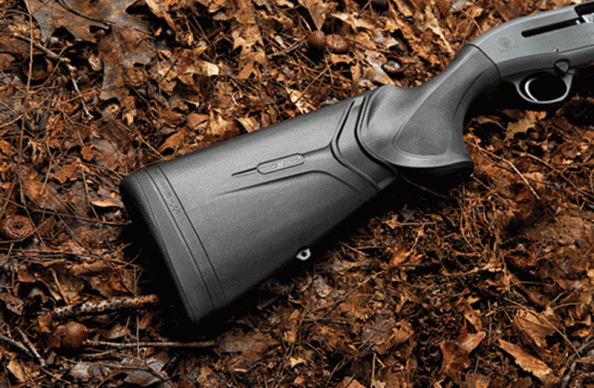
Sharp Design
I liked the trim dimensions on the forend, and the tacky material that is inset into it gives a good grip. The only issue I had is that the material didn’t extend high enough up onto the forend to give the fingers a secure hold. (It only wraps around the bottom, where the gun sits in the palm of the hand.) Also, the “Euro” styling of the lines on the forend—which seems to be de rigueur on most semi-autos these days, regardless of the country of origin—includes a line with an edge sharp enough to hurt the shooter’s hand when firing heavier loads. A slight radius on that line would be enough to fix this blunder.
The gun comes with two spacers that can be inserted between the butt pad and stock to allow you to adjust the fit. The gun comes with a ½-inch spacer already installed, and you can swap or augment this with the extra 1-inch spacer provided, giving a total of four different adjustments for length of pull, which should do to accommodate 95 percent of the shooters out there.
The $1,600 price tag will be more than many shooters can afford, but this gun delivers quality, reliability, and Beretta craftsmanship, and is a solid contender in the high-end waterfowl autoloader market.
STATS
Gauge: 12
Capacity: 2+1
Weight: 7 lb. 11 oz.
Barrel Length: 28 in.
Overall Length: 49 3/8 in.
Length of Pull: 14 1/2 in.
Drop, Comb: 1 1/2 in.
Drop, Heel: 2 1/2 in.
Trigger Pull: 5 lb. 3 oz.
Suggested Retail: $1,600
Contact: berettausa.com
REPORT CARD
Overall:***
Performance: A Design: B Price/Value: C+
VERDICT The A400 Xtreme is meant for hard-core waterfowlers and it delivers on performance, ease of operation, and reliability. It is also versatile enough for other bird-hunting chores. A couple of tweaks to the design of the forend would make it nearly flawless.

